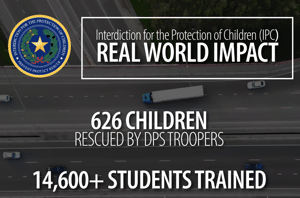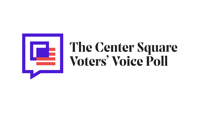Among developed nations with similarly advanced economies, the United States stands out for having especially high levels of income inequality. Though the U.S. ranks among the wealthiest countries in the world, more than one in every 10 American citizens live below the poverty line – and the problem is getting worse.
Between 2020 and 2021, the most recent years of available data, the number of Americans living below the poverty line climbed from 38.4 million to 41.4 million. The 7.9% year-over-year increase was a break from the nearly decade-long trend of poverty reduction.
The poverty line in the United States now stands at an annual income of $14,580 for an individual and $30,000 for a family of four – with slightly higher thresholds in Alaska and Hawaii. The consequences of living on such low incomes are far reaching and potentially devastating. Individuals living in poverty often struggle to afford basic needs, such as food, shelter, and health care. Additionally, the stress caused by persistent poverty can negatively impact mental health, leading to higher rates of depression, anxiety disorders, and substance abuse.
According to five-year estimates from the U.S. Census Bureau’s 2021 American Community Survey, Holmes County has the highest poverty rate of any county or county equivalent in Mississippi. An estimated 39.2% of the local population live below the poverty line, compared to the 19.4% statewide poverty rate.
Additionally, the typical household in the county earns $24,958 a year, about $24,200 less than the typical Mississippi household.
Counties or county equivalents were not considered in this analysis if poverty rates were not available in the 2021 ACS, if the population for which the poverty status had been determined was less than 1,000, or if the sampling error associated with a county’s data was deemed too high.
| Geography | Poverty rate in county or county equivalent (%) | Poverty rate in state (%) | Median household income in county or county equivalent ($) | Median household income in state ($) |
|---|---|---|---|---|
| Alabama: Greene | 39.8 | 15.8 | 28,826 | 54,943 |
| Alaska: Kusilvak | 36.6 | 10.4 | 37,975 | 80,287 |
| Arizona: Apache | 33.9 | 13.5 | 34,788 | 65,913 |
| Arkansas: Phillips | 33.3 | 16.0 | 32,235 | 52,123 |
| California: Trinity | 22.5 | 12.3 | 42,206 | 84,097 |
| Colorado: Bent | 25.4 | 9.6 | 40,972 | 80,184 |
| Connecticut: New Haven | 11.5 | 10.0 | 75,043 | 83,572 |
| Delaware: Kent | 13.3 | 11.4 | 63,715 | 72,724 |
| Florida: Hamilton | 26.4 | 13.1 | 39,346 | 61,777 |
| Georgia: Lanier | 34.1 | 13.9 | 33,956 | 65,030 |
| Hawaii: Hawaii | 13.8 | 9.5 | 68,399 | 88,005 |
| Idaho: Madison | 24.3 | 11.4 | 53,498 | 63,377 |
| Illinois: Alexander | 24.5 | 11.8 | 39,871 | 72,563 |
| Indiana: Monroe | 21.8 | 12.5 | 54,096 | 61,944 |
| Iowa: Story | 19.4 | 11.0 | 62,578 | 65,429 |
| Kansas: Riley | 22.0 | 11.5 | 53,296 | 64,521 |
| Kentucky: Wolfe | 34.6 | 16.3 | 24,349 | 55,454 |
| Louisiana: East Carroll | 47.3 | 18.8 | 25,049 | 53,571 |
| Maine: Washington | 18.7 | 11.0 | 46,689 | 63,182 |
| Maryland: Somerset | 20.4 | 9.2 | 48,661 | 91,431 |
| Massachusetts: Suffolk | 17.3 | 9.9 | 80,260 | 89,026 |
| Michigan: Isabella | 23.8 | 13.3 | 48,840 | 63,202 |
| Minnesota: Mahnomen | 21.1 | 9.2 | 48,021 | 77,706 |
| Mississippi: Holmes | 39.2 | 19.4 | 24,958 | 49,111 |
| Missouri: Pemiscot | 27.5 | 12.8 | 35,865 | 61,043 |
| Montana: Roosevelt | 32.3 | 12.5 | 47,182 | 60,560 |
| Nebraska: Thurston | 20.5 | 10.3 | 56,223 | 66,644 |
| Nevada: Mineral | 19.6 | 12.9 | 43,009 | 65,686 |
| New Hampshire: Sullivan | 12.5 | 7.4 | 64,587 | 83,449 |
| New Jersey: Cumberland | 15.7 | 9.8 | 58,397 | 89,703 |
| New Mexico: McKinley | 34.0 | 18.3 | 40,262 | 54,020 |
| New York: Bronx | 26.5 | 13.5 | 43,726 | 75,157 |
| North Carolina: Robeson | 27.3 | 13.7 | 36,736 | 60,516 |
| North Dakota: Sioux | 38.5 | 10.7 | 39,755 | 68,131 |
| Ohio: Athens | 25.5 | 13.4 | 47,061 | 61,938 |
| Oklahoma: Okfuskee | 27.6 | 15.2 | 43,000 | 56,956 |
| Oregon: Malheur | 19.4 | 12.1 | 47,906 | 70,084 |
| Pennsylvania: Philadelphia | 22.8 | 11.8 | 52,649 | 67,587 |
| Rhode Island: Providence | 13.6 | 11.3 | 65,797 | 74,489 |
| South Carolina: Dillon | 31.2 | 14.5 | 39,780 | 58,234 |
| South Dakota: Todd | 59.0 | 12.5 | 26,250 | 63,920 |
| Tennessee: Hancock | 29.1 | 14.3 | 29,650 | 58,516 |
| Texas: Dimmit | 46.5 | 14.0 | 25,000 | 67,321 |
| Utah: San Juan | 21.2 | 8.8 | 52,400 | 79,133 |
| Vermont: Essex | 14.7 | 10.5 | 48,194 | 67,674 |
| Virginia: Radford | 35.4 | 9.9 | 44,360 | 80,615 |
| Washington: Whitman | 24.7 | 10.0 | 43,613 | 82,400 |
| West Virginia: McDowell | 28.9 | 16.9 | 30,127 | 50,884 |
| Wisconsin: Menominee | 26.2 | 10.7 | 54,940 | 67,080 |
| Wyoming: Albany | 23.6 | 10.7 | 50,733 | 68,002 |


















































